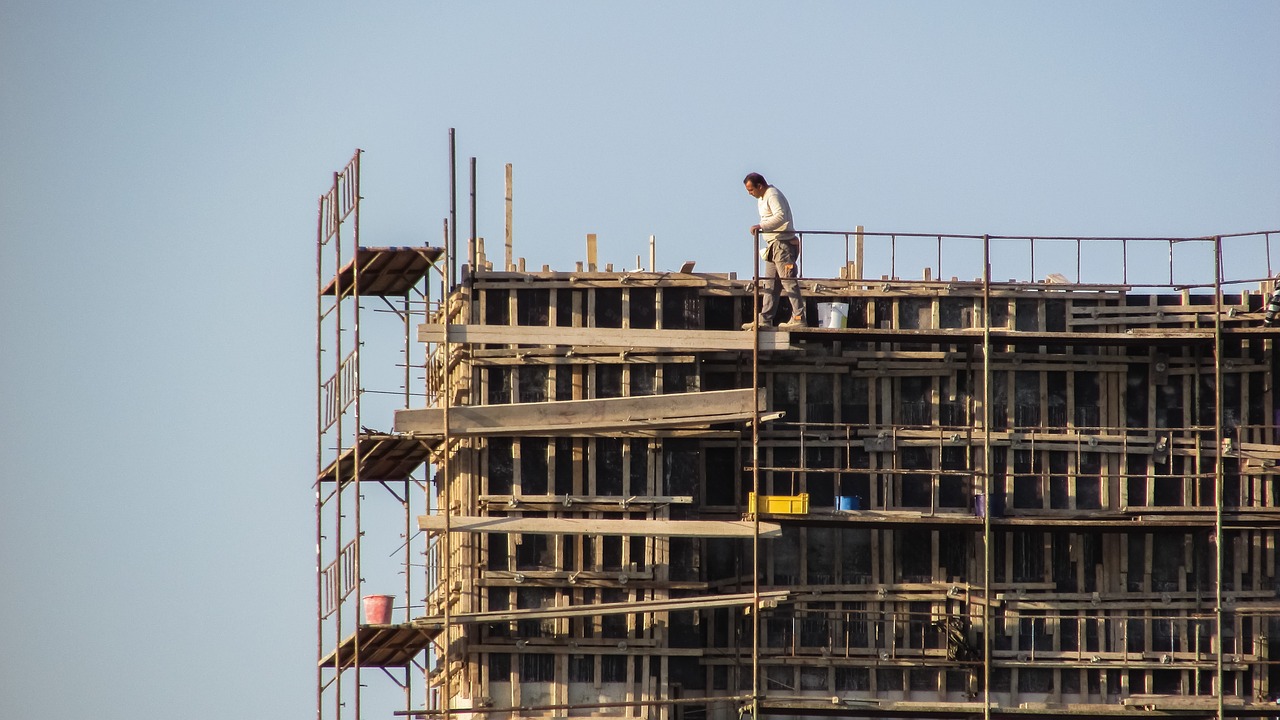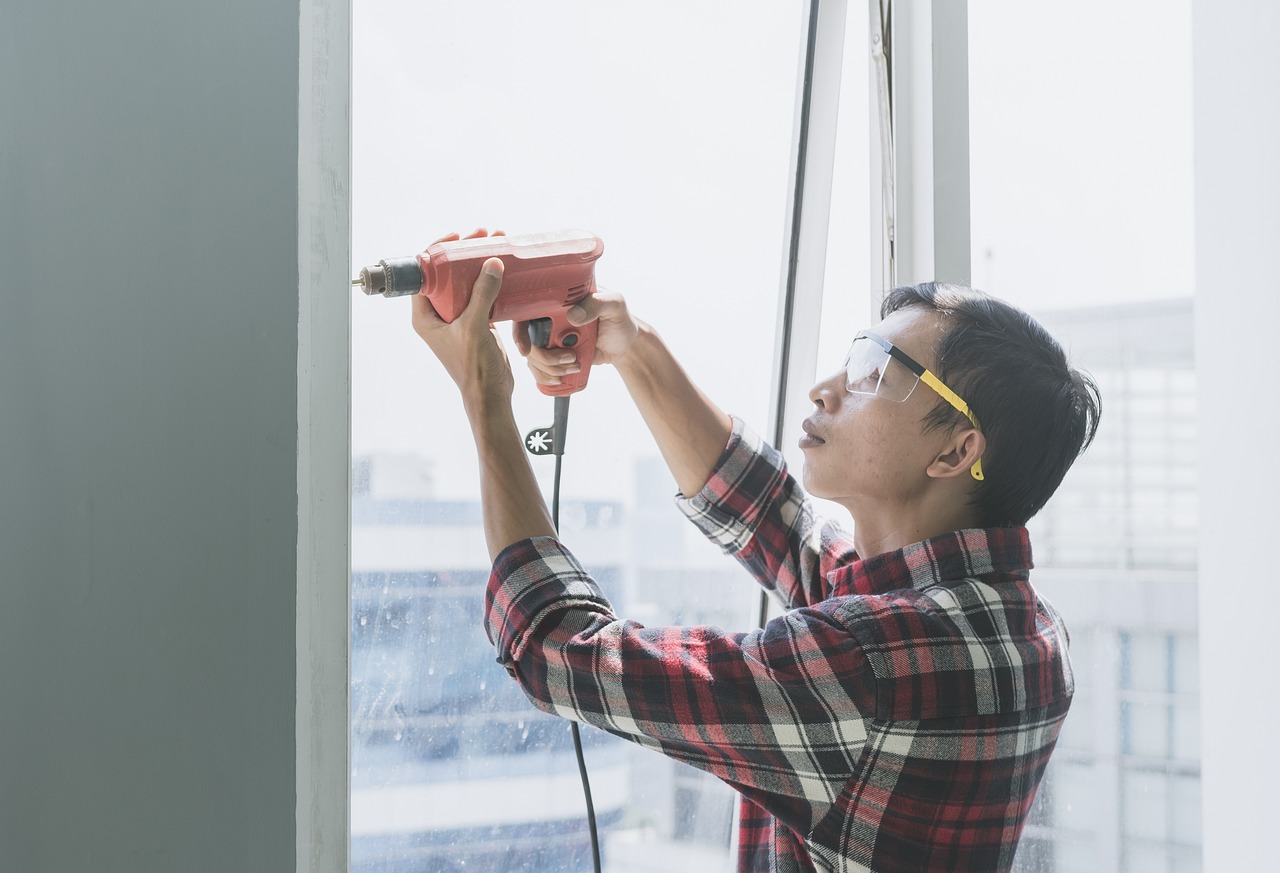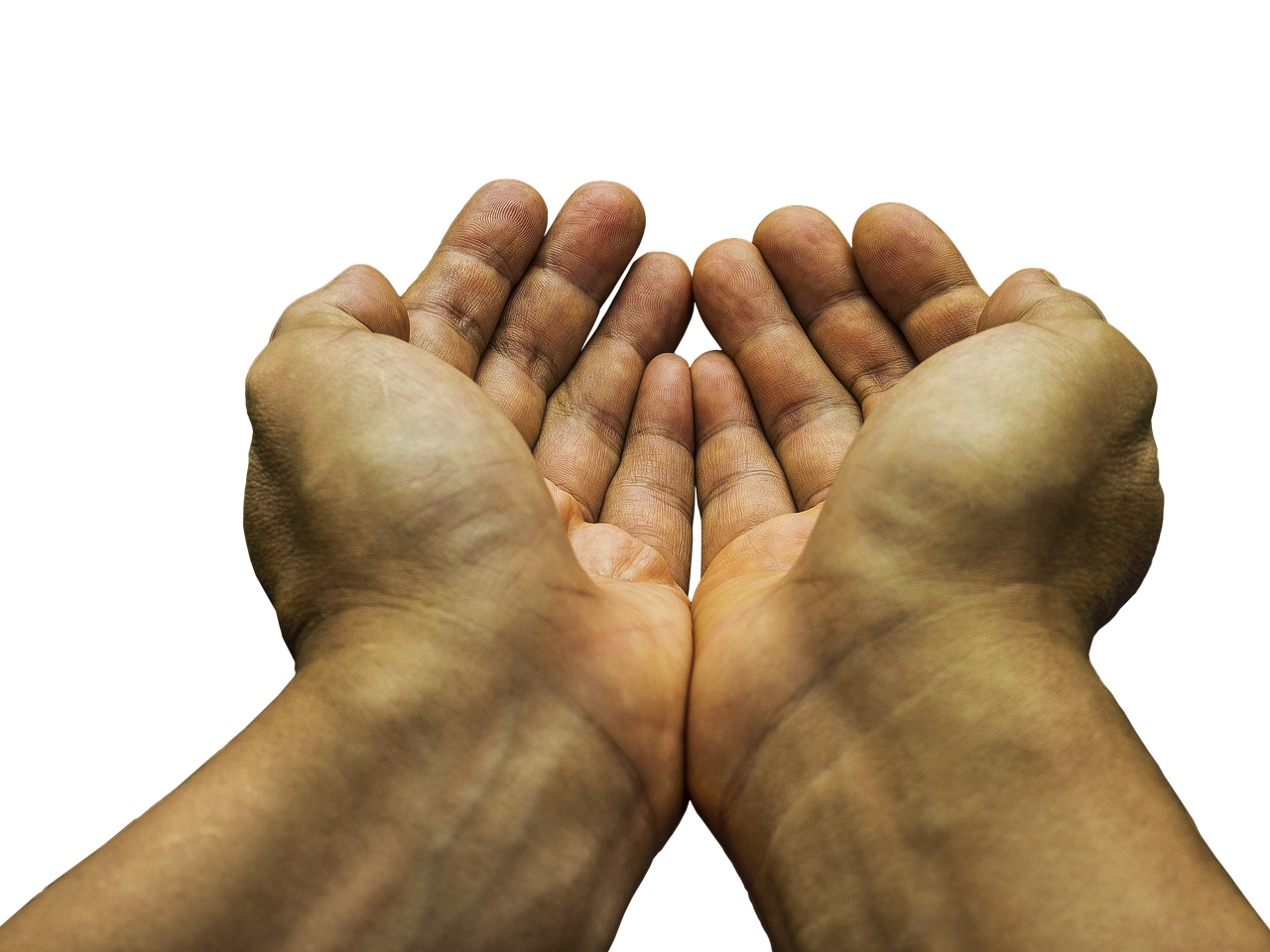Discussing Safety Concerns Faced by LGBTQ+ Community
The safety concerns faced by the LGBTQ+ community are profound and multifaceted, affecting individuals in various aspects of their lives. Imagine walking down the street, feeling the weight of judgmental gazes, or worse, encountering hostility simply for being who you are. This isn't just an exaggeration; it's a reality for many. The LGBTQ+ community often grapples with issues that extend beyond mere prejudice; they face real threats of violence, discrimination, and a lack of supportive environments. These challenges not only jeopardize their physical safety but also take a toll on their mental and emotional well-being.
In recent years, we've seen a growing awareness of these issues, yet the fight for safety and acceptance continues. It's essential to delve into the various dimensions of these safety concerns—understanding the types of violence that occur, the pervasive discrimination in workplaces and public spaces, and the mental health impacts that stem from societal stigma. By shedding light on these topics, we can foster a more inclusive and safe environment for everyone.
One of the most alarming aspects of this discussion is the prevalence of violence against LGBTQ+ individuals. Hate crimes, often fueled by ignorance and bigotry, can leave deep physical and emotional scars. Domestic abuse is another critical issue, frequently overlooked, where LGBTQ+ individuals may not feel safe seeking help due to fear of discrimination. The impact of such violence is not just immediate; it can lead to long-lasting trauma that affects every facet of a person's life.
Moreover, discrimination in various settings—be it workplaces, public spaces, or even within families—contributes significantly to the safety concerns faced by LGBTQ+ individuals. This discrimination can manifest in many forms, from subtle microaggressions to outright hostility. The repercussions can be devastating, leading to increased anxiety, depression, and a sense of isolation among those targeted. It's crucial to recognize how these negative experiences can create a cycle of fear and vulnerability, making it challenging for individuals to thrive.
In conclusion, discussing the safety concerns of the LGBTQ+ community isn't just about identifying problems; it's about understanding the human experience behind these issues. By raising awareness and advocating for change, we can work towards a society where everyone feels safe and accepted, regardless of their sexual orientation or gender identity. The journey towards safety and inclusivity is ongoing, and it requires the collective effort of all of us. So, let's explore these challenges further and consider how we can contribute to a safer, more inclusive world.
- What are the main safety concerns for the LGBTQ+ community?
The main safety concerns include violence, discrimination in public and private settings, and mental health challenges stemming from societal stigma.
- How does workplace discrimination affect LGBTQ+ individuals?
Workplace discrimination can create unsafe environments, leading to job insecurity, mental health issues, and decreased productivity.
- What role do community support networks play in enhancing safety?
Community support networks provide vital resources, peer support, and advocacy, helping LGBTQ+ individuals feel less isolated and more empowered.
- What can be done to improve safety for the LGBTQ+ community?
Advocacy for policy changes, creating inclusive environments, and increasing awareness about LGBTQ+ issues are crucial steps towards improving safety.

Understanding Violence Against LGBTQ+ Individuals
Violence against the LGBTQ+ community is a harrowing reality that permeates many aspects of life. It’s not just about the physical harm; it’s about the emotional scars and the pervasive fear that looms over individuals simply for being themselves. Imagine walking down the street, constantly looking over your shoulder, worrying if someone will lash out at you because of who you love or how you identify. This fear is a daily burden for many in the community.
One of the most alarming forms of violence faced by LGBTQ+ individuals is hate crimes. These acts are often fueled by deep-seated prejudice and can range from verbal harassment to brutal physical assaults. According to recent statistics, hate crimes against LGBTQ+ individuals have been on the rise, creating an atmosphere of anxiety and insecurity. For instance, in 2022 alone, a significant percentage of hate crimes reported were motivated by sexual orientation or gender identity. This highlights the urgent need for societal change and increased protection for vulnerable individuals.
Moreover, domestic abuse within LGBTQ+ relationships is another critical issue that often goes unnoticed. Many people assume that domestic violence is solely a heterosexual issue, but the reality is that LGBTQ+ individuals face unique challenges in these situations. The stigma surrounding sexual orientation and gender identity can make it difficult for victims to seek help. They may feel isolated, fearing that their experiences won’t be taken seriously due to their identity. This leads to a dangerous cycle where victims remain trapped in abusive situations, feeling they have no safe outlet.
To better understand the types of violence faced by LGBTQ+ individuals, consider the following categories:
- Physical Violence: This includes assaults, battery, and other forms of physical harm.
- Verbal Abuse: Insults, threats, and derogatory comments can be just as damaging as physical violence.
- Sexual Violence: This encompasses rape, sexual assault, and coercion, often exacerbated by societal stigma.
- Cyberbullying: The rise of social media has led to new forms of harassment, where LGBTQ+ individuals are targeted online.
Each of these forms of violence not only affects the individual but also sends ripples through the community, creating an environment of fear and mistrust. The impact of such violence can be devastating, leading to long-term psychological effects, including anxiety, depression, and post-traumatic stress disorder (PTSD). It's a grim reminder that violence against the LGBTQ+ community is not just a statistic; it’s a lived experience for many.
In conclusion, understanding the violence faced by LGBTQ+ individuals is crucial for fostering a safer society. It requires a collective effort to challenge the narratives that perpetuate hate and discrimination. Only through awareness, education, and advocacy can we hope to create a world where everyone feels safe and accepted, regardless of who they are or whom they love.

The Role of Discrimination in Safety
Discrimination is a pervasive issue that significantly impacts the safety of LGBTQ+ individuals across various facets of life. It's like a shadow that lurks in the background, casting doubt and fear over everyday experiences. Whether it's in the workplace, public spaces, or even within one's own community, the effects of discrimination can be both subtle and overt, leading to a pervasive sense of insecurity. The reality is that when people feel marginalized or targeted, their safety is compromised, and this can have devastating consequences on their mental and physical well-being.
In workplaces, for instance, discrimination manifests in various forms—ranging from microaggressions to outright hostility. Imagine going to a place where you should feel safe and valued, only to be met with snide remarks or exclusion from team activities. This not only affects job performance but also contributes to a toxic work environment. Studies show that LGBTQ+ individuals who experience workplace discrimination are more likely to suffer from anxiety and depression, which can further exacerbate feelings of unsafety. The statistics are alarming; a survey by the Human Rights Campaign revealed that nearly 50% of LGBTQ+ employees have experienced discrimination or harassment at work.
Moreover, discrimination extends beyond the workplace into public spaces, where LGBTQ+ individuals often face harassment or violence. For many, simply holding hands with a partner in public can feel like a daring act, fraught with the potential for negative repercussions. This fear can lead to a self-imposed isolation, where individuals feel compelled to hide their identities to avoid confrontation. The impact of such discrimination is profound, as it can lead to a breakdown of community ties and support systems that are essential for fostering safety.
To illustrate the gravity of discrimination's impact, consider the following table that outlines various settings where LGBTQ+ individuals may face discrimination, along with the potential consequences:
| Setting | Type of Discrimination | Potential Consequences |
|---|---|---|
| Workplace | Harassment, exclusion from opportunities | Mental health issues, decreased job satisfaction |
| Public Spaces | Verbal abuse, physical violence | Fear of going out, social isolation |
| Healthcare | Refusal of service, biased treatment | Delayed medical care, worsening health conditions |
As we delve deeper into the role of discrimination in safety, it becomes clear that addressing these issues is not just about advocating for LGBTQ+ rights; it's about fostering a culture of inclusivity and acceptance. When individuals feel safe and supported in their environments, they are more likely to thrive and contribute positively to society. This brings us to the importance of implementing anti-discrimination policies and practices that protect LGBTQ+ individuals in all areas of life. By creating an atmosphere where diversity is celebrated rather than shunned, we can begin to dismantle the barriers that lead to fear and insecurity.
In conclusion, the role of discrimination in the safety of LGBTQ+ individuals cannot be overstated. It is a multifaceted issue that requires a comprehensive approach to address effectively. By raising awareness, advocating for policy changes, and fostering supportive environments, we can work towards a future where everyone, regardless of their sexual orientation or gender identity, can feel safe and valued in their communities.
- What are the common forms of discrimination faced by LGBTQ+ individuals? Common forms include workplace harassment, denial of services, and violence in public spaces.
- How can workplaces become more inclusive for LGBTQ+ employees? Implementing anti-discrimination policies, providing training on diversity, and fostering an open culture can help.
- What role does community support play in enhancing safety for LGBTQ+ individuals? Community support networks provide a sense of belonging and resources that can mitigate feelings of isolation and fear.

Workplace Discrimination
Workplace discrimination against LGBTQ+ individuals is a pervasive issue that can create a hostile environment, undermining both personal well-being and professional growth. Imagine walking into a place where your very identity is questioned or disregarded—this is the reality for many who identify as LGBTQ+. Discrimination can manifest in various forms, from subtle microaggressions to outright harassment. The impact of such treatment can be devastating, leading to decreased job satisfaction, increased stress levels, and even mental health issues.
In many cases, LGBTQ+ employees may feel compelled to hide their identities to avoid discrimination, which can lead to a sense of isolation and anxiety. This is not just an individual problem; it affects the entire workplace culture. When employees feel unsafe or unsupported, it stifles creativity and productivity, ultimately harming the organization as a whole. Therefore, fostering an inclusive workplace is not merely a moral obligation but a strategic business imperative.
To combat workplace discrimination effectively, organizations must implement clear and comprehensive policies that promote equality and respect for all employees, regardless of their sexual orientation or gender identity. These policies should include:
- Zero-tolerance policies for harassment and discrimination.
- Regular training sessions to educate all employees about LGBTQ+ issues and inclusivity.
- Support systems, such as employee resource groups, that provide safe spaces for LGBTQ+ individuals.
Moreover, having visible allies within the organization can significantly enhance the feeling of safety among LGBTQ+ employees. Allies can advocate for change and help create a supportive environment. It's essential that organizations not only talk the talk but also walk the walk. This means actively promoting diversity and inclusion in hiring practices, employee evaluations, and team dynamics.
In conclusion, workplace discrimination is a critical issue that requires immediate attention. By creating inclusive policies and fostering a supportive culture, organizations can ensure that all employees feel safe and valued. When LGBTQ+ individuals can bring their whole selves to work, everyone benefits—both personally and professionally. It's time for businesses to recognize that inclusivity is not just a trend; it's a necessity for a thriving workplace.

Legal Protections for LGBTQ+ Workers
Understanding the legal protections available to LGBTQ+ workers is crucial in fostering a safe and equitable workplace. In many regions, laws have evolved significantly, aiming to safeguard the rights of LGBTQ+ individuals against discrimination and harassment. However, the effectiveness of these laws can vary widely depending on the location and the specific circumstances faced by employees.
For instance, in the United States, the landmark Supreme Court ruling in Bostock v. Clayton County (2020) established that firing someone for being gay or transgender constitutes discrimination based on sex, thus providing a federal protection framework. This ruling marked a significant milestone, affirming that LGBTQ+ individuals are entitled to the same protections as their heterosexual and cisgender counterparts.
Despite these advancements, many LGBTQ+ workers still encounter challenges. For example, while some states have enacted comprehensive non-discrimination laws, others lack such protections, leaving employees vulnerable to discrimination without legal recourse. This inconsistency highlights the importance of understanding the specific laws in your area. Below is a brief overview of common legal protections that may be available:
| Type of Protection | Description |
|---|---|
| Employment Non-Discrimination | Protection against discrimination in hiring, firing, and promotions based on sexual orientation or gender identity. |
| Harassment Protections | Legal recourse for employees facing harassment due to their LGBTQ+ status. |
| Health Benefits | Access to health benefits that cover LGBTQ+ specific health needs, including mental health services and transition-related care. |
| Family Leave | Rights to family leave for same-sex partners and parents. |
Furthermore, it is essential for organizations to proactively implement inclusive policies that not only comply with the law but also promote a culture of respect and acceptance. This can include training programs that educate employees about LGBTQ+ issues, establishing clear anti-discrimination policies, and creating support systems for those who may feel marginalized.
Ultimately, while legal protections play a pivotal role in ensuring safety for LGBTQ+ workers, the commitment of employers to foster an inclusive environment is equally important. By advocating for and implementing these measures, organizations can help create workplaces where all employees feel valued and safe, regardless of their sexual orientation or gender identity.
- What legal protections are available for LGBTQ+ workers? Legal protections may include non-discrimination in hiring, harassment protections, and access to health benefits.
- How can I report discrimination at work? Employees should document incidents and report them to human resources or a designated authority within the organization.
- Are there specific laws for LGBTQ+ rights in my state? Yes, laws vary by state; it's important to research local legislation for specific protections.
- What should I do if my employer does not have inclusive policies? Consider discussing the importance of inclusivity with management or seeking support from LGBTQ+ advocacy organizations.

Creating Inclusive Workspaces
Creating inclusive workspaces is not just a trend; it's a necessity for fostering safety and well-being among LGBTQ+ employees. Imagine walking into an office where your identity is not only recognized but celebrated. This kind of environment empowers individuals to be their authentic selves, leading to greater productivity and job satisfaction. However, the journey to inclusivity requires intentional efforts from organizations, starting with understanding the unique challenges faced by LGBTQ+ individuals.
One of the first steps in creating an inclusive workspace is implementing comprehensive anti-discrimination policies. These policies should explicitly prohibit discrimination based on sexual orientation, gender identity, and gender expression. But it's not enough to simply have these policies on paper; organizations must actively communicate them and ensure that all employees are educated about their rights. This can be achieved through regular training sessions and workshops that foster awareness and understanding among all staff members.
Moreover, having visible LGBTQ+ representation in leadership roles can significantly impact workplace culture. When employees see people like themselves in positions of power, it sends a powerful message that diversity is valued. Organizations can also establish mentorship programs that connect LGBTQ+ employees with allies and leaders who can provide support and guidance. This not only helps in professional development but also cultivates a sense of belonging.
Another essential aspect of creating an inclusive workspace is ensuring that facilities are accessible and affirming for all gender identities. This includes having gender-neutral bathrooms and changing facilities, as well as using inclusive language in all communications. For example, addressing groups as "everyone" instead of "ladies and gentlemen" can make a significant difference in how individuals feel in the workplace. Additionally, organizations should encourage the use of preferred pronouns to respect and affirm each person's identity.
To further promote inclusivity, companies can celebrate LGBTQ+ events and history months, such as Pride Month. This can include hosting events, providing educational resources, or even participating in community parades. Such activities not only show support but also create opportunities for employees to engage and connect with one another, building a stronger, more cohesive workplace culture.
Finally, it's crucial for organizations to establish feedback mechanisms that allow employees to voice their concerns and experiences regarding inclusivity. Regular surveys and open forums can provide valuable insights into the workplace climate and highlight areas for improvement. By actively listening to employees and making necessary adjustments, organizations can demonstrate their commitment to creating a safe and inclusive environment.
In summary, creating inclusive workspaces is a multifaceted endeavor that requires commitment, education, and ongoing effort. By prioritizing inclusivity, organizations not only enhance the safety of their LGBTQ+ employees but also contribute to a more vibrant and innovative workplace overall.
- What are the benefits of creating an inclusive workspace? An inclusive workspace enhances employee morale, increases productivity, and fosters innovation by allowing diverse perspectives to thrive.
- How can organizations educate their employees about LGBTQ+ inclusivity? Organizations can conduct training sessions, workshops, and provide resources that promote understanding and awareness of LGBTQ+ issues.
- What role does leadership play in fostering an inclusive environment? Leadership sets the tone for workplace culture; visible support from leaders encourages inclusivity and empowers employees.
- Why is it important to have gender-neutral facilities? Gender-neutral facilities ensure that all employees feel safe and respected, regardless of their gender identity.

Public Spaces and Safety
When we think about safety, we often picture the cozy confines of our homes, but what about the world outside? For many in the LGBTQ+ community, public spaces can feel like a minefield of uncertainty. Imagine walking down the street, feeling the weight of judgment in the air, or entering a café where you sense that not everyone is welcoming. This is the reality for countless individuals who identify as LGBTQ+. The fear of harassment or violence can transform a simple outing into a daunting experience.
Public spaces should be places of freedom and expression, where everyone feels safe to be their true selves. Unfortunately, this is not always the case. Many LGBTQ+ individuals report feeling unsafe in various public environments, such as parks, bars, and even during public events. The fear of being targeted can lead to a reluctance to engage in social activities, which is profoundly isolating. This situation is exacerbated by the prevalence of hate crimes, where individuals are attacked simply for being who they are. According to recent statistics, a significant percentage of hate crimes are motivated by sexual orientation or gender identity, which underscores the urgent need for change.
Moreover, the lack of supportive community spaces can further alienate LGBTQ+ individuals. Many cities have limited resources dedicated to creating safe havens for these communities. Establishing designated safe spaces—such as LGBTQ+ centers or inclusive community events—can significantly enhance feelings of safety and acceptance. These spaces not only provide a refuge but also foster a sense of belonging and solidarity among individuals who share similar experiences.
To combat the challenges faced in public spaces, it’s essential to advocate for community support and awareness. Local organizations and allies can play a pivotal role in promoting safety by:
- Hosting awareness campaigns to educate the public about LGBTQ+ issues.
- Creating safe zones within public spaces, identifiable by signage or community support.
- Encouraging local law enforcement to undergo training on LGBTQ+ sensitivity and rights.
Furthermore, it’s crucial for individuals to come together and support one another. Community events that celebrate diversity can help dispel myths and foster understanding. When people see LGBTQ+ individuals thriving in their communities, it challenges stereotypes and promotes acceptance, paving the way for a more inclusive society.
Ultimately, enhancing safety for the LGBTQ+ community in public spaces is a collective effort. It requires the commitment of individuals, organizations, and local governments to create environments where everyone feels safe and valued. By working together, we can turn the tide on discrimination and violence, ensuring that public spaces are truly public—welcoming and safe for all.
Q1: What are some common safety concerns for LGBTQ+ individuals in public spaces?
A1: Common concerns include the fear of harassment, discrimination, and violence based on sexual orientation or gender identity. Many LGBTQ+ individuals report feeling unsafe in certain areas, leading to avoidance of public spaces altogether.
Q2: How can communities support LGBTQ+ safety in public areas?
A2: Communities can support safety by creating designated safe spaces, hosting awareness campaigns, and ensuring that local law enforcement is trained in LGBTQ+ sensitivity. Building inclusive community events can also foster understanding and acceptance.
Q3: What role do allies play in enhancing safety for the LGBTQ+ community?
A3: Allies can advocate for LGBTQ+ rights, stand against discrimination, and support local initiatives that promote inclusivity. Their presence and support can help create a more welcoming environment for LGBTQ+ individuals.

The Impact of Mental Health on Safety
Mental health is a crucial aspect of overall well-being, and for the LGBTQ+ community, it is often directly linked to feelings of safety and security. Imagine trying to navigate a world that constantly sends you messages of unacceptance; it's no wonder that mental health issues are prevalent among LGBTQ+ individuals. The stigma and discrimination faced can lead to anxiety, depression, and even suicidal thoughts. These mental health challenges not only affect personal lives but also impact the broader safety of the community. When individuals feel unsafe in their environments, whether at home, work, or in public spaces, their mental health deteriorates further, creating a vicious cycle that is difficult to escape.
Research shows that LGBTQ+ individuals are at a higher risk for mental health issues compared to their heterosexual counterparts. This disparity can often be traced back to societal pressures and a lack of acceptance. When someone is constantly battling negative perceptions, their ability to function in daily life can be severely compromised. This is particularly alarming when considering that mental health issues can lead to increased vulnerability to violence and discrimination. For instance, individuals suffering from depression may withdraw from social interactions, reducing their support networks and leaving them more exposed to potential harm.
Moreover, the relationship between mental health and safety is not one-sided. Feelings of safety can significantly influence mental health. When LGBTQ+ individuals feel supported and accepted in their environments, their mental health improves, leading to a more robust sense of community and belonging. Conversely, when safety is compromised—be it through hate crimes, discrimination, or even microaggressions—the mental health of individuals can plummet. This creates a scenario where the lack of safety exacerbates mental health issues, which in turn can lead to further safety concerns.
Access to mental health resources is crucial in breaking this cycle. Unfortunately, many LGBTQ+ individuals face barriers when seeking help. These barriers can include a lack of understanding from healthcare providers, fear of discrimination, or simply not knowing where to find appropriate support. The importance of tailored support services cannot be overstated. Mental health professionals who are knowledgeable about LGBTQ+ issues can make a significant difference in the lives of those seeking help. They can create safe spaces where individuals feel comfortable expressing their struggles without fear of judgment.
Community support networks also play a vital role in enhancing safety and mental well-being. When individuals have access to peer support, they often feel less isolated and more empowered. These networks can provide a sense of belonging and understanding that is crucial for mental health. In addition, advocacy within these networks can lead to greater awareness of the unique challenges faced by LGBTQ+ individuals, pushing for necessary changes in policies and societal attitudes. As communities come together to support one another, the collective strength can foster safer environments for all.
- How does mental health affect safety for LGBTQ+ individuals?
Mental health issues can lead to increased vulnerability and reduced ability to seek help, making individuals more susceptible to violence and discrimination. - What barriers do LGBTQ+ individuals face in accessing mental health resources?
Barriers include fear of discrimination, lack of knowledgeable providers, and limited availability of tailored support services. - How can community support networks enhance safety?
These networks provide peer support, reduce feelings of isolation, and advocate for necessary changes to improve safety and mental health resources.

Access to Mental Health Resources
Access to mental health resources is a critical aspect of ensuring the well-being and safety of LGBTQ+ individuals. Unfortunately, many face significant barriers when it comes to seeking help. These barriers can range from societal stigma to a lack of culturally competent care providers. Imagine trying to navigate a maze blindfolded—this is often how LGBTQ+ individuals feel when they seek mental health support. They may encounter professionals who lack understanding of their unique experiences, leading to feelings of isolation and frustration.
One of the primary challenges is the stigma surrounding mental health within society. Many LGBTQ+ individuals grow up in environments where discussing mental health is taboo, leading to internalized shame. This stigma can create a reluctance to seek help, as individuals may fear judgment or discrimination from healthcare providers. Moreover, the fear of being outed or not being taken seriously can deter them from accessing necessary services.
Additionally, there is often a lack of tailored support services that address the specific needs of the LGBTQ+ community. For example, according to recent studies, only a small percentage of mental health professionals receive training on LGBTQ+ issues. This gap in training means that when LGBTQ+ individuals do seek help, they may not receive the understanding or support they need. It's like going to a mechanic for a car issue, only to find out they specialize in bicycles!
To illustrate the disparity in access to mental health resources, consider the following table that highlights key statistics:
| Statistic | Percentage |
|---|---|
| LGBTQ+ individuals who experience mental health issues | 40% |
| Those who have sought mental health support | 25% |
| Providers who are LGBTQ+ competent | 16% |
It's clear that the numbers paint a concerning picture. While a significant portion of the LGBTQ+ community experiences mental health challenges, only a fraction is able to find the support they need. This is where community initiatives and advocacy come into play. Organizations dedicated to LGBTQ+ rights are working tirelessly to bridge this gap by providing resources, training for mental health professionals, and creating safe spaces for individuals to share their experiences.
In conclusion, improving access to mental health resources for the LGBTQ+ community is not just a matter of providing services—it's about fostering an environment where individuals feel safe, understood, and empowered to seek help. By addressing stigma, enhancing training for providers, and promoting community support, we can take significant strides toward ensuring that every LGBTQ+ individual has the opportunity to thrive mentally and emotionally.
- What are the common mental health issues faced by LGBTQ+ individuals?
Common issues include anxiety, depression, and substance abuse, often exacerbated by societal stigma and discrimination. - How can I find LGBTQ+-friendly mental health resources?
Look for local LGBTQ+ centers, online directories, and community organizations that provide referrals to trained mental health professionals. - What should I do if I feel unsafe seeking mental health help?
Consider reaching out to trusted friends or community organizations for support, and explore online therapy options that prioritize confidentiality.

Community Support Networks
Community support networks are the lifeblood of safety and resilience for LGBTQ+ individuals. These networks provide a sense of belonging and solidarity, which is essential in a world that can often feel hostile and unwelcoming. Imagine walking into a room filled with people who not only understand your struggles but also celebrate your identity. That’s the power of community! It’s a safe haven where individuals can express themselves freely without fear of judgment or violence.
These networks encompass a variety of organizations, from grassroots movements to larger, established non-profits. They serve several vital functions, including offering resources, advocacy, and emotional support. For instance, many local LGBTQ+ centers provide safe spaces for individuals to gather, share experiences, and find mentorship. These centers often host events, workshops, and support groups that help individuals develop coping strategies and build resilience against the discrimination they may face.
Moreover, community support networks often engage in advocacy work, pushing for policy changes that protect LGBTQ+ rights and promote safety. By organizing rallies, awareness campaigns, and educational programs, they amplify the voices of those who are often marginalized. This grassroots activism not only raises awareness but also fosters a sense of empowerment among community members. When individuals come together for a common cause, they can create ripples of change that extend far beyond their immediate surroundings.
In addition to providing a sense of belonging, these networks also offer crucial resources for mental health support. Many LGBTQ+ individuals face significant mental health challenges due to societal stigma and discrimination. Community organizations often partner with mental health professionals to provide tailored services, ensuring that individuals receive the support they need in a culturally competent manner. Access to these resources can be life-changing, helping individuals navigate their emotional challenges and enhancing their overall safety.
Furthermore, community support networks can help bridge the gap between LGBTQ+ individuals and essential services. For example, they can assist in connecting individuals with legal aid, healthcare, and housing resources. By offering these connections, they ensure that community members have access to the tools they need to thrive. In essence, they are not just support systems; they are lifelines that help individuals navigate the complexities of life as an LGBTQ+ person.
Ultimately, the strength of community support networks lies in their ability to foster connections and solidarity. They create a tapestry of support that weaves together the diverse experiences and identities within the LGBTQ+ community. By participating in these networks, individuals not only find safety but also contribute to a larger movement for equality and acceptance. It's a reminder that together, we can face the challenges head-on and work towards a future where everyone can live freely and authentically.
- What are community support networks?
Community support networks are groups and organizations that provide emotional, social, and practical support to LGBTQ+ individuals, helping them navigate challenges and build connections.
- How can I get involved in a community support network?
Getting involved can be as simple as attending local events, volunteering, or joining online groups focused on LGBTQ+ issues.
- What resources do these networks offer?
They often provide mental health support, legal assistance, advocacy, and social events to foster community connection.
- Why are these networks important for safety?
They create a sense of belonging and solidarity, which is crucial for mental well-being and can help individuals feel safer in their environments.

Advocacy and Policy Changes
Advocacy and policy changes are vital components in addressing the safety concerns faced by the LGBTQ+ community. The fight for equality and protection under the law is not just a battle for rights; it’s a quest for dignity and respect in every aspect of life. Imagine walking down the street without the fear of being harassed or discriminated against simply for being who you are. This vision is what drives many advocates to push for comprehensive reforms that can create safer environments for everyone.
Organizations such as The Human Rights Campaign and GLAAD play a pivotal role in this advocacy. They work tirelessly to raise awareness about the issues facing LGBTQ+ individuals and push for legislative changes that can provide greater protections. Through community outreach, education, and lobbying efforts, these organizations strive to influence policymakers and ensure that LGBTQ+ rights are recognized and respected.
One of the most pressing issues is the need for anti-discrimination laws at both federal and state levels. While some progress has been made, the patchwork of protections across the country leaves many individuals vulnerable. For instance, in some states, it is still legal to fire someone based on their sexual orientation or gender identity. This inconsistency creates a climate of fear and uncertainty, making it crucial for advocates to push for uniform protections that safeguard LGBTQ+ individuals in all areas of life, including employment, housing, and public accommodations.
Moreover, advocacy isn't just about laws; it's also about changing societal attitudes. Public perception plays a significant role in the safety of LGBTQ+ individuals. Campaigns that promote awareness and education can help dismantle harmful stereotypes and promote understanding. For example, initiatives that highlight the contributions of LGBTQ+ individuals to society can help foster a more inclusive environment. When people see LGBTQ+ individuals as part of the fabric of their communities, it reduces the stigma and discrimination they often face.
Advocacy also involves grassroots efforts. Community members can rally together to create local support networks that provide resources and safe spaces. These networks can be lifelines for individuals who feel isolated or threatened. By uniting, they can amplify their voices and demand change from local authorities. It’s about building a community that stands together against hatred and discrimination.
| Advocacy Strategies | Description |
|---|---|
| Legislative Lobbying | Engaging with lawmakers to promote the introduction and passage of pro-LGBTQ+ legislation. |
| Public Awareness Campaigns | Utilizing media and community events to educate the public about LGBTQ+ issues and rights. |
| Community Organizing | Building coalitions among local LGBTQ+ groups to strengthen advocacy efforts and resources. |
In conclusion, advocacy and policy changes are essential in creating a safer and more equitable society for LGBTQ+ individuals. It requires a concerted effort from organizations, community members, and allies to challenge existing norms and push for progress. Change may not happen overnight, but with persistent advocacy, we can pave the way for a future where everyone, regardless of their identity, can feel safe and accepted.
- What are the main goals of LGBTQ+ advocacy? The main goals include achieving legal protections, promoting equality, and raising awareness about the challenges faced by the community.
- How can I get involved in advocacy efforts? You can get involved by joining local organizations, participating in events, or advocating for policy changes in your community.
- What impact do advocacy campaigns have on public policy? Advocacy campaigns can influence lawmakers and lead to the introduction and passage of important legislation that protects LGBTQ+ rights.
Frequently Asked Questions
- What types of violence do LGBTQ+ individuals face?
LGBTQ+ individuals often face various forms of violence, including hate crimes, domestic abuse, and harassment. These acts can stem from societal prejudice and discrimination, leading to severe emotional and physical harm.
- How does discrimination affect the safety of LGBTQ+ individuals?
Discrimination can create unsafe environments for LGBTQ+ individuals, especially in workplaces and public spaces. This can result in increased stress, anxiety, and a lack of access to necessary support, ultimately compromising their overall well-being.
- What legal protections exist for LGBTQ+ workers?
Legal protections for LGBTQ+ workers vary by region but often include anti-discrimination laws that safeguard against unfair treatment based on sexual orientation or gender identity. Understanding these laws is vital for promoting a safe and equitable workplace.
- How can workplaces create a more inclusive environment for LGBTQ+ employees?
Workplaces can foster inclusivity by implementing comprehensive policies that promote diversity, offering training on LGBTQ+ issues, and encouraging open dialogue. Creating support networks within the organization can also enhance safety and belonging.
- What role do public spaces play in the safety of LGBTQ+ individuals?
Public spaces can pose significant safety risks for LGBTQ+ individuals, particularly if these areas lack supportive community norms. Advocacy for safe environments and community support can help mitigate these risks and promote acceptance.
- How does mental health impact the safety of LGBTQ+ individuals?
Mental health issues, often exacerbated by societal stigma and discrimination, can significantly impact the safety of LGBTQ+ individuals. Poor mental health can lead to increased vulnerability to violence and discrimination, highlighting the need for accessible support services.
- What barriers do LGBTQ+ individuals face in accessing mental health resources?
Barriers to accessing mental health resources can include a lack of culturally competent providers, financial constraints, and fear of discrimination. Addressing these barriers is crucial for ensuring that LGBTQ+ individuals receive the support they need.
- How do community support networks enhance safety for LGBTQ+ individuals?
Community support networks provide a sense of belonging and safety for LGBTQ+ individuals. They offer peer support, advocacy, and resources that can help individuals navigate challenges and feel empowered in their identities.
- What is the importance of advocacy for LGBTQ+ rights?
Advocacy is essential for promoting policy changes that enhance the safety and rights of LGBTQ+ individuals. Organizations and individuals working together can influence legislation and create more inclusive environments, ultimately fostering a safer society.



















